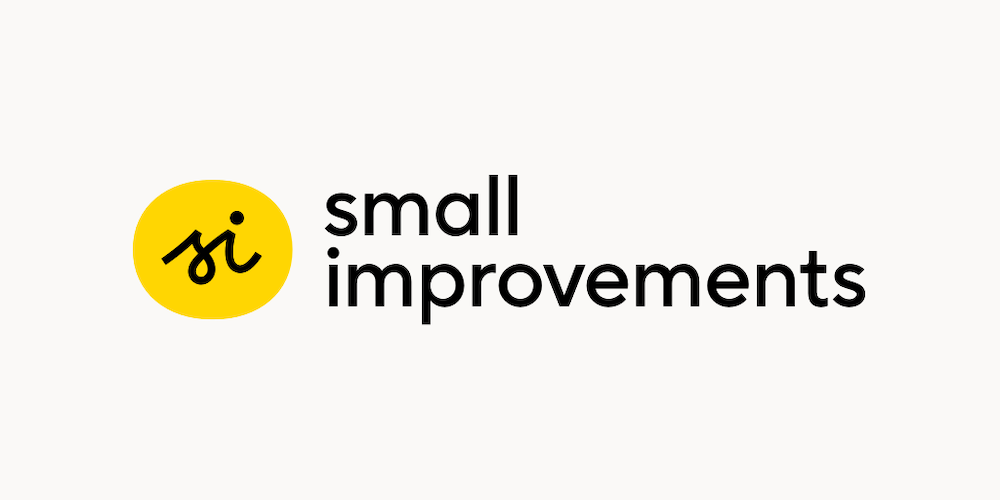Imagine gathering all the ingredients for a delicious meal but never bothering to cook it. That’s the essence of what happens when we collect feedback but fail to act on it.
Employee insights are valuable to any company, but only if we:
- Read the feedback
- Learn from it
- Translate it into positive action
This article makes the case for closing feedback loops, explains what happens if your feedback cycle breaks down, and provides best practices for creating feedback action plans.
Why we need to act on feedback
Employee feedback is any information collected informally or formally that relates to an employee’s experience working for your company. The feedback might be related to their performance, colleagues, or the overall culture. Collecting this feedback is a goldmine of intelligence for companies. But only those that commit to translating it into positive action will achieve the following benefits:
1. Build trust in the feedback process
When employees know their employer values their feedback, it reinforces that they’re an integral part of the organization. This notion encourages them to give honest, constructive feedback that drives meaningful results.
Jaguar Land Rover HR manager Rachel Tomkins explains,
Closing the feedback loop after running employee surveys is critical. If employees don’t see that you have listened and taken action, you will see a decline in participation rates and interest. Communication is key!
2. Achieve employee and organizational growth
Acting on feedback ensures that individual employees continuously build skills, develop their capabilities, and set everyone up for success. For the employee, this growth leads to nourishing career opportunities, while for the organization, it ensures that everyone is working towards achieving business development objectives.
3. Solidify company values
When management and HR teams use feedback to drive positive change, it sends a strong message to the entire organization that they’re listening … actively listening. This demonstration shows that everyone’s voice matters and reinforces company values such as transparency, collaboration, and continuous learning.
4. Improve employee engagement
Gallup’s State of the Global Workplace 2023 report tells us that 23% of employees are thriving and engaged at work. The remaining 59% and 18% are either not engaged or actively disengaged. It follows that engagement has a knock-on impact on productivity—those who aren’t committed to their work are unlikely to strive for excellence and produce the results your business needs. But Salesforce data tells us that acting on feedback can turn this around; employees are 4.6x more likely to produce their best work if they feel their voice is heard.
How does the cycle of employee feedback work?
Employee feedback is cyclical, involving the following steps:
1. Collecting feedback
The cycle begins with collecting employee feedback from multiple sources. Use peer-based feedback requests, automated pulse surveys, 360-degree reviews, performance appraisals, or any other feedback mechanism your organization finds valuable.
2. Setting objectives
The next step is to analyze and interpret the data to identify patterns that you can translate into employee development objectives.
Example: Peer feedback reveals that Henry needs to improve his communication skills and understand customer expectations better. Henry works with his manager to set relevant objectives for these growth areas.
3. Supporting employees in achieving objectives
Employees require resources, support, and direction from their managers and HR teams to meet their objectives. They may benefit from mentorship, coaching, and training programs to bridge knowledge gaps, while accessing professional networks that help them develop their skills.
4. Requesting feedback on progress
Employees can request feedback from peers and mentors at any point to guide their progress. This is an essential step in the cycle, allowing employees to analyze their performance and reflect on what is working well. This feedback also provides detailed insights about how to be more productive in the future.
Example of the feedback cycle in action: Sales manager Tina receives feedback from her direct reports that she’s too demanding as a leader. Tina sets an objective to be more collaborative and supportive of her team and works with HR to receive leadership training. After her training, she requests new feedback from her team, which helps her understand the areas where she needs to further refine her leadership skills.
Why do companies not act on feedback?
So, what’s going on in companies that leave feedback loops wide open? Why don’t they connect the dots but struggle instead to develop dissatisfied employees that lack faith in the feedback process? Some common reasons why managers and HR teams don’t act on the insights include:
Too much data
Harnessing data is a common problem in today’s workplace. 65% of companies report having too much data to analyze, with feedback undoubtedly falling within this bracket. Additionally, employers are under pressure to collect and share employee feedback as often as possible to boost employee engagement. Traditional annual feedback processes have become monthly, bi-weekly, or even weekly catch-ups in some organizations. And this can quickly feel like overkill if you don’t have the means to analyze the data.
Lack of processes and resources
Organizations without a clear feedback process or framework may rely on manual methods to collect and analyze feedback. This is time-consuming, inefficient and can result in an unclear picture of what to do next. An effective feedback process will undoubtedly require:
- Financial investment: For example, budgeting for feedback software and ongoing training.
- Time investment: Managers and HR must be willing to sit down regularly with their direct reports to create actionable growth plans. They can create reusable templates to simplify and repeat the process.
- Leadership buy-in: Individual contributors can only request feedback if the company has adopted a culture of open and honest dialogue, which starts at the top.
Fear of change
Acting on feedback can mean change, but many managers are reluctant to embrace this because they don’t want the disruption to their teams. Some managers may also prioritize quick fixes over long-term solutions. This means they’ll address areas of improvement that can be resolved quickly but often don’t commit to the bigger picture.
Example of a broken feedback cycle: Frank is a software engineer who has provided feedback in three consecutive cycles that his team doesn’t work effectively with the Quality Assurance team. A lack of communication between the two teams leads to misunderstandings and delays in bug reporting. Frank consistently mentions this in his employee feedback, but no action is taken, and the silo walls between the departments get higher. Frank eventually stops mentioning the issue and starts looking for work with a rival employer. The feedback cycle is broken, and no longer producing positive organizational results.
9 best practices to act on employee feedback
Now we’ve illustrated the importance of translating feedback into action, here are nine best practices to drive real change in your workplace.
1. Create a feedback-friendly culture
Company culture plays a significant role in enabling employees to share their insights. Your workers should always feel comfortable sharing their thoughts and suggestions without fear of backlash or retribution. HR can significantly promote an open culture by actively seeking feedback, showing appreciation for input, and demonstrating that feedback is valued and taken seriously.
Some companies favor anonymous feedback, feeling that it enables employees to be honest. But there’s a stronger argument for creating a transparent environment that sets the tone for continuous growth and development.
The ideal: Employees are receptive to hearing what peers think of their performance and want to learn new perspectives to achieve real progress.
2. Use multiple feedback channels
A range of feedback channels caters to different preferences, situations, and comfort levels. Some employees who are short on time may prefer the option to rattle through a quick round of questions they’re familiar with. But longer feedback surveys are more likely to provide deeper insights to act on. Some options include:
- Pulse Surveys: Short, sharp questions that you send out frequently to measure trends such as employee sentiment.
- Suggestion boxes: A physical or digital location where employees submit constructive ideas.
- 1:1 Meetings: Managers can provide a safe space for employees to open up about their concerns, training requirements, and career aspirations. During this meeting, managers will also offer a mix of reinforcing (positive) and redirecting (constructive) feedback. Document all feedback at the end of the meeting, and have both parties sign off on the proposed next steps.
- Group Feedback: Focus groups or employee resource groups are a useful way to obtain honest feedback and create action plans for change.
- Performance Reviews: Traditional reviews provide a forum for managers and employees to share honest feedback, with space to reflect on positive contributions and dig deep into development opportunities.
- 360 Degree Feedback: In this style of feedback, HR teams will collect multi-source insights from peers, managers, leaders, business partners, and customers (as required) for a holistic overview of the employees’ performance. This diverse approach reduces bias from the feedback process, making it easier to drive meaningful action.
3. Design a mix of questions
Feedback can only be actionable if you have enough information to work with. This means offering a mix of qualitative and quantitative questions. Let’s look at these in more detail:
- Quantitative questions deliver measurable, consistent insights to identify trends and easily highlight areas for improvement. They often use a closed answer format, where the answer is Yes/No, or a Likert scale where survey recipients might choose an answer from 1 to 5.
Example: “How engaged do you feel in your job this month? Give an answer of 1-5 where 1 is Extremely Disengaged, 2 is Disengaged, 3 is Neither Engaged nor Disengaged, 4 is Engaged, and 5 is Extremely Engaged.”
- Qualitative questions help managers to understand the “why” behind employee feedback. They often include free-text questions, where survey recipients are encouraged to write full sentences and provide examples to explain their answers. So long as your employees believe in your feedback process, this question style gives you more scope to act.
Example: “Can you provide an example of a time when you felt your manager or peers didn’t value your work? Include as much detail as possible.”
4. Regular surveys
The working world is constantly evolving as companies expand into new business areas, lay people off, go through mergers, or are impacted by global economic events. As your organization sheds another layer of skin, the feedback you collected six months ago may no longer be valid today.
Get around this by conducting regular surveys to gather new data. Your updated survey may cover the same ground and even include the same questions, but it will ensure you have the latest stats to work with. Remember to keep your surveys concise and relevant to keep your employees engaged.
5. Act on feedback promptly
Demonstrate a sense of urgency in responding to employee feedback. When employees see their feedback leads to tangible actions, they’re more likely to continue engaging in the feedback process. As HR author and award-winning psychologist, Gethin Nadin explains,
Nothing will boost engagement more than asking someone what they need. Nothing will kill it quicker than not acting on what they said.
6. Prioritize key development areas
Analyze the feedback data to identify recurring themes and prioritize the most critical issues affecting employees. Focus on areas that have the most significant impact on employee satisfaction, productivity, and overall well-being.
Example: Ida is a new accounts team member who has been vocal about the lack of support from her team during onboarding. Along with wanting to improve Ida’s situation, you’re also aware that this issue could impact other joiners. The feedback highlights you don’t have a robust framework for helping new team members acclimatize to their roles or ramp up to become productive. As a result, you prioritize introducing a buddy system to provide more personalized support and mentoring from experienced staff members.
7. Involve employees in decision-making
Making decisions that affect your employees without involving your employees is a mistake. Rather than taking the “dictator” approach, open up decision-making to include employees. Give them a stake in any changes or improvements to their work environment or career trajectory.
Involvement could come in many shapes and forms, including:
- Development meetings: Organize a 1:1 meeting to identify an individual’s specific growth plan and discuss potential challenges or training.
- Pilot programs: For feedback that affects employees company-wide, consider rolling out changes on a trial basis, and evaluate the success of the initiative through regular feedback.
- Employee councils: Form a team of employees from various departments to brainstorm solutions or validate decision-making.
- Feedback forums: Host regular meetings where employees can voice their opinions, suggestions, and concerns about ongoing projects, company culture, or workplace-related issues. While these meetings are an important demonstration of a transparent company culture, keep the tone constructive.
- Idea contests: Encourage employees to propose new ideas or solutions. Implement the best ideas fostering a culture of innovation and participation.
8. Train managers to communicate feedback outcomes
Transparent communication builds trust and shows that the organization listens and cares about its employees’ opinions. Once managers have made action plans based on their feedback, it’s important to communicate any follow-up action to employees to keep them in the loop.
Even if change is in the pipeline, let employees know that improvements are on the way and provide a reasonable timeline so they understand the likely outcome.
Example: Carla provides feedback that she has experienced racial bias in the workplace, and believes she has been overlooked for promotion due to her Hispanic ethnicity. This is a serious matter, and Carla’s manager will need time to review previous performance evaluations that may have been compromised due to bias. Carla’s manager should communicate with her openly and honestly, letting her know that the leadership team is investigating her experience, conducting performance calibrations, and taking the appropriate measures to ensure a level playing field going forward.
Equip managers with the skills and knowledge needed to act on feedback effectively. They might require training in active listening, empathy, and how to address employee concerns constructively.
9. Monitor progress
Regularly assessing the impact of your employee feedback process involves crunching even more data. If that sounds like a lot, bear with us. This time you’ll analyze metrics like the following to determine if you’re building an effective continuous feedback culture over time:
- Key performance indicators: Track these over time to understand if employees are achieving their KPIs faster or with fewer challenges.
- Employee engagement: A boost in these scores could mean that you’ve implemented an impactful feedback process.
- Employee churn: There should be fewer resignations when feedback is working well.
- Exit interview data: Capture data from your leavers to understand why they’ve chosen an external career path. If too many people complain you’re overlooking their opinions, you still have work to do.
You can’t measure progress without understanding your current picture, so begin by taking a metric benchmarking snapshot, then measure progress monthly, quarterly, annually, or whatever cadence makes most sense to you. Analyze how you’re getting on and make adjustments as required.
Share meaningful feedback with Small Improvements
Transforming feedback into action isn’t something you’ll achieve overnight, but it is something you can start doing today. Small Improvements offers a suite of tools to collect, analyze and act on employee feedback. Check out the following tools, and use our advanced analytics to create meaningful action plans based on data:
- 360 Feedback: Gather a wide variety of feedback from relevant people who interact with your employees. Configure anonymity settings, generate reports, and manage the reviewer approval process from a central dashboard.
- Goals and Objectives: Use performance feedback as the foundation for development. Set individual goals, but gain visibility of what your team members are working towards too. This transparency makes it easier for the entire company to align in pursuit of success.
- Feedback Requests: Put employees in the driving seat of their development by empowering them to request feedback at the end of a project, following training, or any time they want to learn and grow on the job.
Ready to empower your employees with rich, actionable feedback? Book a free Small Improvements demo today.



